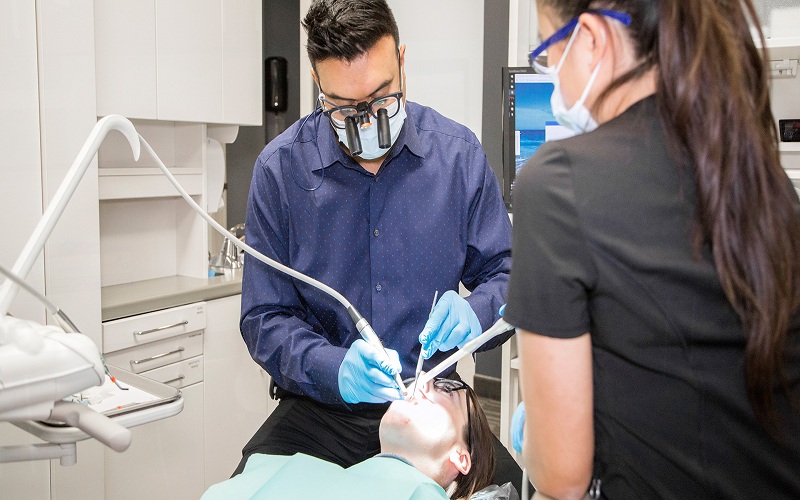Tooth extractions are a common dental procedure used to remove a tooth from the mouth. While it’s always best to preserve natural teeth, sometimes extraction is necessary to maintain oral health or alleviate pain and discomfort. The family dentist in Columbia, MD will further elaborate on the need for tooth extraction, the procedure, and the aftercare involved.
What are the indications of tooth extraction?
Reasons for tooth extraction include:
- Severe tooth decay: Teeth with extensive decay that cannot be saved with a filling or crown may need to be extracted.
- Gum disease: Advanced gum disease can cause teeth to become loose and require extraction.
- Impacted teeth: Wisdom teeth or other teeth that don’t have enough space to erupt properly may need to be extracted.
- Overcrowding: Overcrowded Teeth may require extraction to make room for proper alignment.
- Fractured teeth: Teeth that are severely fractured or cracked may need to be extracted.
- Abscessed teeth: Teeth with abscesses that cannot be treated with antibiotics or root canals may require extraction.
What are the types of tooth extractions?
There are two main types of tooth extractions, namely:
- Simple extraction: A simple extraction involves removing a visible tooth with a straightforward procedure.
- Surgical extraction: A surgical extraction involves removing a tooth that is impacted, below the gum line, or requires sectioning into smaller pieces for removal.
How is tooth extraction performed?
Tooth extraction is a dental procedure that involves removing a tooth from the mouth. Here’s a step-by-step guide on how it’s performed:
Simple extraction:
- Anesthesia: The dentist numbs the area around the tooth with local anesthesia to minimize discomfort.
- Sectioning: The dentist may section the tooth into smaller pieces to make it easier to remove.
- Elevation: The dentist uses an elevator instrument to gently rock the tooth back and forth, loosening it from the socket.
- Removal: The dentist removes the tooth from the socket using forceps.
- Debridement: The dentist cleans the socket and removes any remaining tissue.
Surgical extraction:
- Anesthesia: The dentist numbs the area around the tooth with local anesthesia and may also use conscious sedation.
- Incision: The dentist makes an incision in the gum tissue to access the impacted tooth.
- Bone removal: The dentist may need to remove some of the surrounding bone to access the tooth.
- Sectioning: The dentist sections the tooth into smaller pieces to make it easier to remove.
- Removal: The dentist removes the tooth from the socket using forceps.
- Debridement: The dentist cleans the socket and removes any remaining tissue.
- Sutures: The dentist may need to close the incision with sutures.
What does the aftercare involve?
Here are the basic aftercare instructions you need to follow post-extraction:
- Avoid strenuous activities for 24-48 hours.
- Follow the dentist’s instructions for pain relief medication.
- Apply gauze to control bleeding and change as needed.
- Consume soft foods and avoid hot liquids for 24 hours.
- Attend follow-up appointments to ensure proper healing.
What are the alternatives to tooth extraction?
Alternatives to tooth extraction include:
- Root canal: A root canal may be an alternative to extraction if the tooth can be saved.
- Dental implants: Dental implants can replace extracted teeth to maintain oral function and aesthetics.
Are there any complications of tooth extraction?
You may sometimes experience complications after tooth extraction, such as:
- Prolonged bleeding
- Paresthesia (tingling sensation or numbness)
- Increased risk of infection
- Dry socket
- Nerve damage
Tooth extractions are a common and necessary procedure to maintain oral health. While it’s always best to preserve natural teeth, sometimes extraction is the best option. Understanding the reasons, types, and procedures for tooth extraction can help alleviate anxiety and ensure proper aftercare. If you’re facing tooth extraction, consult with your dentist to discuss the best options for your oral health.

